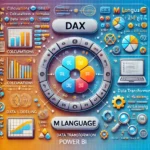Arch Linux vs. Fedora: Comparison for Choosing the Right Linux Distribution
Choosing the right Linux distribution can be a challenging task, given the multitude of options available. Two popular choices that often come into the spotlight for their distinct characteristics are Arch Linux and Fedora. In this blog post, we’ll take a deep dive into both distributions to help you make an informed decision about which one is best suited for your needs.
Introducing Arch Linux
Arch Linux is renowned for its minimalistic and do-it-yourself approach. It is a rolling release distribution, meaning you get the latest software updates without the need for a full system reinstall. Arch Linux utilizes the Pacman package manager, a powerful tool for package management, making it easy to install, update, and remove software packages. The hallmark of Arch Linux is its high degree of customization, allowing users to build their systems from scratch to meet their exact specifications.
Welcoming Fedora
Fedora, on the other hand, is known for its commitment to open-source principles and cutting-edge technology. It offers a balance between stability and up-to-date software. Fedora employs the DNF package manager, and it provides three primary editions: Workstation (for desktop users), Server (for server environments), and IoT (for Internet of Things applications). Fedora also serves as the upstream source for Red Hat Enterprise Linux (RHEL), making it a crucial distribution in the Linux ecosystem.
https://synapsefabric.com/2023/09/02/arch-linux-vs-debian-choosing-the-right-linux-distribution/
A Side-by-Side Comparison: Arch Linux vs. Fedora
To help you decide between Arch Linux and Fedora, let’s compare them across several key aspects:
| Aspect | Arch Linux | Fedora |
|---|---|---|
| Installation | Complex, manual installation process | Straightforward, user-friendly installer |
| Package Management | Pacman package manager | DNF package manager |
| Software Repositories | Extensive, but may require additional setup | Comprehensive, well-maintained repositories |
| Release Model | Rolling release, always up-to-date | Regular releases with a focus on stability |
| Customization | Highly customizable, build from the ground up | Customizable, but not as extreme as Arch |
| Desktop Environment | No default, choose your preferred DE | Comes with GNOME by default |
| Community and Support | Active and helpful community, abundant documentation | Strong community and official support |
| System Stability | Potential for occasional instability due to rolling release | Offers a good balance between stability and updates |
| Use Cases | Ideal for experienced users and those who want total control | Suited for a wide range of users, including desktop and server environments |
Making the Right Choice
The decision between Arch Linux and Fedora depends on your specific needs and preferences. Here are some recommendations to consider:
Choose Arch Linux If:
- You’re an experienced Linux user or enthusiast who enjoys hands-on customization.
- Staying on the cutting edge with the latest software is a priority.
- You’re comfortable with manual configurations and troubleshooting.
- You want a lightweight and minimalistic system tailored to your exact requirements.
Choose Fedora If:
- You value a balance between up-to-date software and system stability.
- You prefer a straightforward installation process and a user-friendly desktop environment (Fedora Workstation).
- You’re interested in the latest open-source technologies and want a reliable development platform.
- Your use cases span from desktop computing to server management.
In conclusion, Arch Linux and Fedora represent two distinct approaches to Linux, catering to different user profiles and preferences. Whether you opt for Arch Linux’s extensive customization or Fedora’s balanced approach to stability and innovation, both distributions offer a rich Linux experience. Your choice ultimately depends on your level of expertise and your specific use cases. Whichever path you choose, you’ll be part of the vibrant and supportive Linux community, ready to explore the world of open-source software.






